WD Red Pro 6 TB Review - High Performance NAS HDD Gets a Capacity Bump
by Ganesh T S on September 7, 2015 8:00 AM EST- Posted in
- NAS
- Storage
- HDDs
- Western Digital
RAID-5 Benchmarking - Miscellaneous Aspects
Consumers are rightly worried about RAID rebuilds and the scope for drive failures during that process. As one of our evaluation aspects, we randomly yanked out a disk during operation and cleaned it up for rebuild. We recorded the resync duration (time taken to rebuild a 3-disk RAID-5 volume when one of the disks needs to be replaced) as well as the average power consumption during that process. The two aspects, considered together, give an idea of the efficiency of the hard drive. The graph below presents the total energy consumption (Resync Power Consumption (W) X Resync Duration (s)) for the resync.
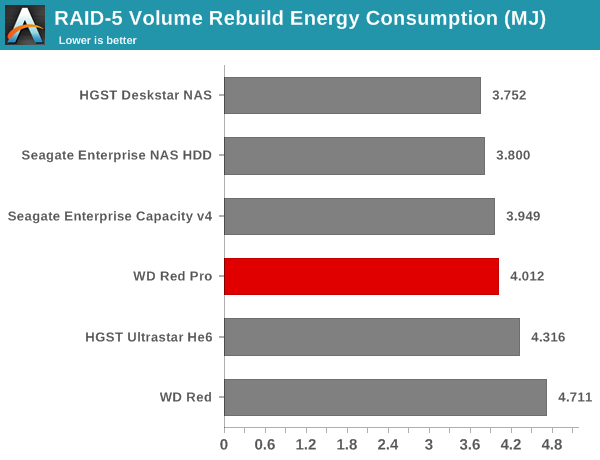
While the energy consumption aspect provides a consolidated view of the various factors, it is still worthwhile to look at the power consumption and resync duration numbers separately. The table below provides the raw information behind the above graph. While the resync duration for the Red Pro is the lowest, the power consumption during the process was also the highest amongst all the evaluated drives. The nett result is that the drive comes in the middle of the pack when it comes to energy efficiency.
| RAID-5 Resync Power Consumption & Duration | ||
| Drive | Power (W) | Duration (s) |
| WD Red Pro | 111.9 | 35850 |
| Seagate Enterprise Capacity v4 | 105.42 | 37462 |
| Seagate Enterprise NAS HDD | 101.91 | 37284 |
| HGST Deskstar NAS | 101.46 | 36981 |
| HGST Ultrastar He6 | 95.36 | 45260 |
| WD Red | 90.48 | 52072 |
We also measured power consumption during the last stage of our multi-client test. With 25 different clients simultaneously stressing the NAS with different types of workloads, we recorded the power consumption at the wall for the NAS as a whole. The various numbers are presented in the graphs below.
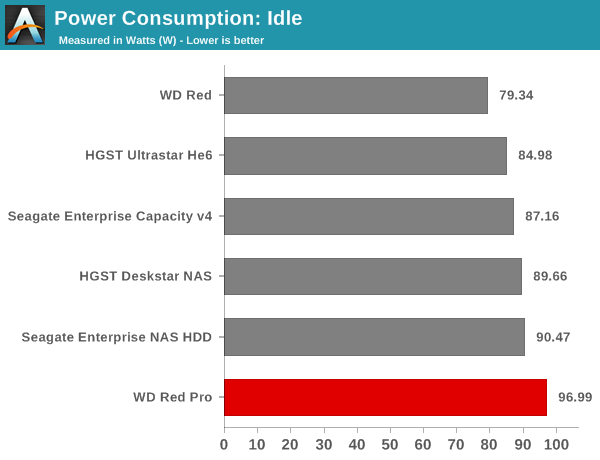
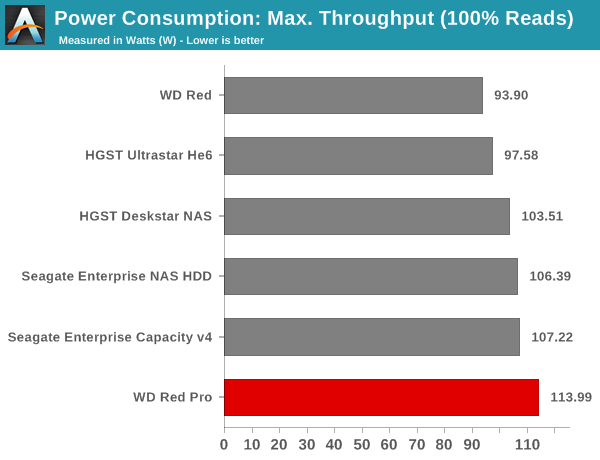
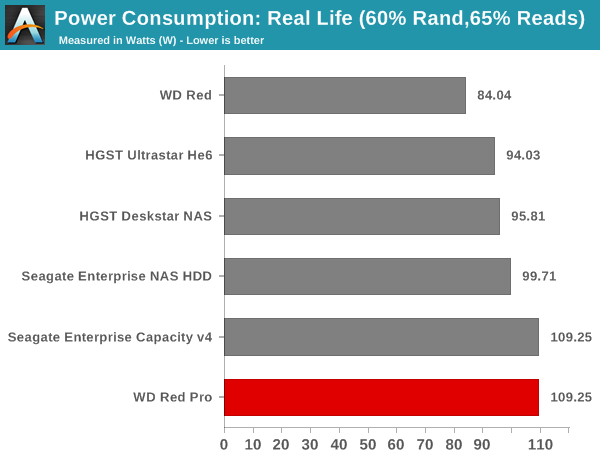
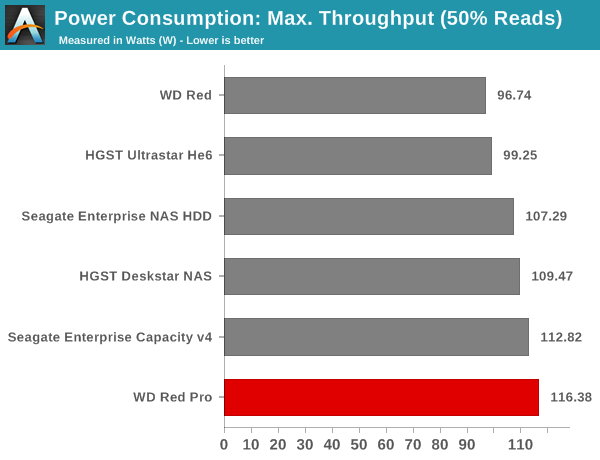
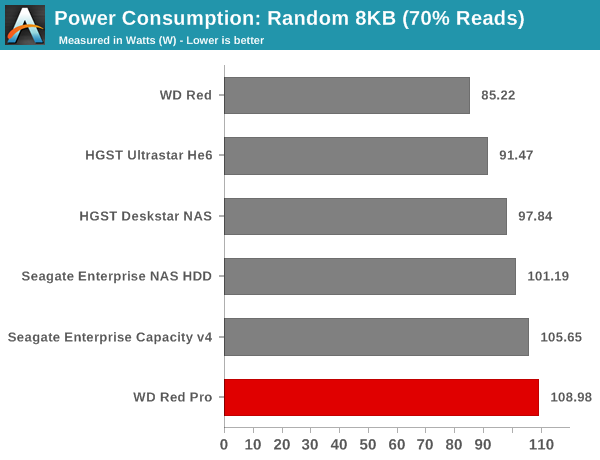
The WD Red Pro is simply not the most power-efficient NAS drive that we have evaluated. Except for the 5400 RPM WD Red, all the other drives that we have in the graphs above are 7200 RPM drives. Despite that fact, the WD Red Pro has the highest average power consumption for all our workloads. However, for a given fixed set of transactions, we expect that the energy efficiency of the WD Red Pro will not be at either extreme (similar to the RAID resync scenario).










62 Comments
View All Comments
Souka - Tuesday, September 8, 2015 - link
It would be even louder with four of these WD Red Pro drives!nagi603 - Monday, October 5, 2015 - link
The problem might also lie with your NAS: insufficient decoupling will lead to very nasty vibration, as is insufficient dampening or the use of not stiff enough components.beginner99 - Tuesday, September 8, 2015 - link
Well with the Pro only $33 more it's a no brainer. The 5 years warranty alone will make that a profitable investment alone.Visual - Tuesday, September 8, 2015 - link
Important details are missing from the article. It should be the first thing covered for drives of such capacities - make it clear if they are using a shingled write method requiring rewrites of large blocks for small random writes.Morawka - Tuesday, September 8, 2015 - link
anyone remember when all seagate consumer drives had 5 year warranties.. it was great. now we are lucky to get a 3 year warranty.FunBunny2 - Tuesday, September 8, 2015 - link
planned obsolescence is a wonderful thing. just ask Apple.star-affinity - Tuesday, September 8, 2015 - link
In what way is Apple worse than others when it comes to ”planned obsolescence”?valinor89 - Tuesday, September 8, 2015 - link
As far as I know Apple was the first mass consumer company to embrace the practice. Or at least the best known for it. Usually gadgets of other companyes were expected to be superceeded by advancing technology, not designed to fail after x time... One of the most famous examples was the Ipod Nano case.The practice existed before but apple put it in the spotlight.
Gigaplex - Sunday, September 13, 2015 - link
Apple is rarely the first to do anything. They certainly weren't the first to embrace planned obsolescence.Hannibal80 - Tuesday, September 8, 2015 - link
Why not moving to a 10gbe for the nas test? I think that for a soho scenario could make sense, with a direct 10gb connection between workstation and nas and classic 1gb link among remaining clients. Just my 2 cents